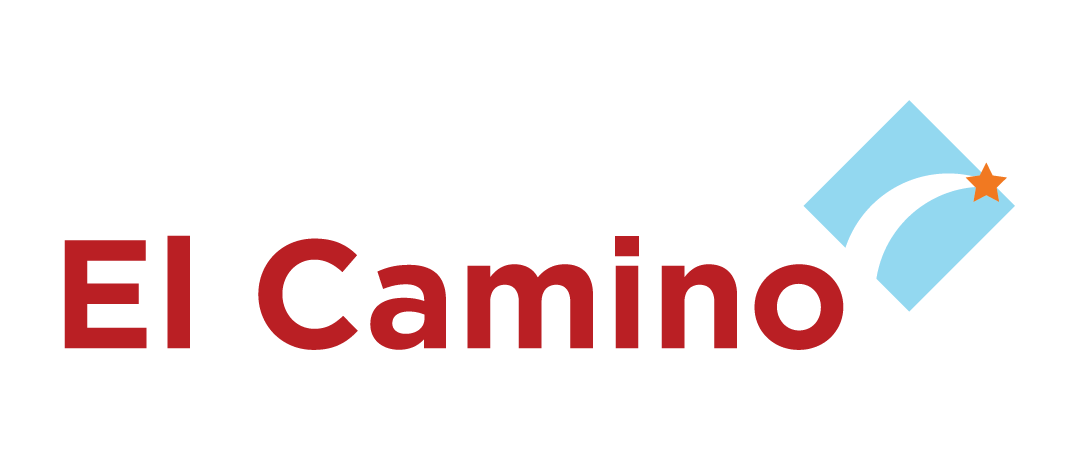
Evaluation
Findings from the most recent evaluation of El Camino, conducted by Child Trends, demonstrate that this culturally relevant program helps students, in high schools with large Latino populations develop the knowledge, attitudes, behaviors, and relationships that support their ability to make informed decisions about sex and pregnancy and achieve their goals.
Quick Look
El Camino is a positive youth development-focused sexual health education program designed for Latino youth.

For Latino Youth
Implemented in schools & communities, especially those with large Latino populations

11, 45-Minute Lessons, in 3 Sections
Consists of eleven, 45-minute lessons, organized in 3 sections

Set Goals
Promotes youth academic & career setting; young people develop plans to achieve positive life goals

Make Informed Sexual & Reproductive Health Choices
Learn about how a pregnancy occurs and effective contraception methods to help avoid unintended pregnancy and STIs

Have Healthy Relationships
Learn about healthy relationships; practice communication skills, how to ask and give consent, and set limits
Read on to learn more about the curriculum, including evaluation findings, adaptations, facilitator resources, and training.
Evaluation Findings, 2024
El Camino is an adolescent sexual health program that employs a positive youth development approach to encourage youth to define their personal goals and think about how they will attain them. Interactive lessons explore links between goal setting and sexual health decisions and provide information about sex, pregnancy, and healthy relationships.
Designed by Child Trends, this culturally relevant program helps students in high schools with large Latino populations develop the knowledge, attitudes, behaviors, and relationships that support their ability to make informed decisions about sex and pregnancy and achieve their goals.
To evaluate El Camino, Child Trends partnered with Identity, Inc. to implement El Camino during lunch, elective classes, or after school at 11 high schools in Maryland with large Latino populations. Researchers at the University of Maryland evaluated El Camino’s effectiveness: classrooms at each school were randomly selected to receive either El Camino or an alternative life skills program. This resource summarizes the demographic characteristics of student participants, their perceptions of the program, and pre- and post-test findings that highlight the need for sexual health education and the positive impacts of El Camino.
El Camino Program Reach
Students
Spanish Classrooms
English Classrooms
Alternative Life Skills Program
Students
Spanish Classrooms
English Classrooms
Demographics & Background of Students

Age
Age
Average Age: 16.3

Time in the United States
Time in the United States
Born outside of the U.S.: 75%
Age came to the U.S.: 14.1 (average)

Language Spoken at Home
Language Spoken at Home
68% Mostly Spanish
11% Mostly English
19% Spanish & English
2% Other

Race/Ethnicity
Race/Ethnicity
Hispanic, Latino, or Spanish-Origin: 84%
Black or African American: 9%
American Indian or Alaska Native: 2%
Asian: 2%
White: 2%
Other: 4%

Grade in School
Grade in School
9th: 34%
10th: 39%
11th: 17%
12th: 8%

Gender Identity
Gender Identity
Male: 43%
Female: 54%
Other/Missing: 3%
Students’ Pre-Program Survey Responses
Mental health at baseline
Percent of students who reported feeling each emotion some of the time, most of the time, or all of the time in the past 30 days.
- Nervous 53%
- Like everything was an effort 44%
- Hopeless 35%
- Depressed 28%
- Worthless 22%
Need for sexual health and positive youth development curricula
- Students reported that they had had penis-vagina sex 26%
- Sexually active students who had sex without any contraceptive method in the 3 months prior 53%
Students’ Survey Responses
Students who participated in El Camino had greater improvements in knowledge, self-efficacy, intentions, and attitudes from pre-test to post-test than students in the control group.
Self Efficacy
Students who definitely know where to go to get birth control
- Pre-Test 21%
- Post-Test 51%
Students who are completely confident in stating and asking for consent
- Pre-Test 58%
- Post-Test 75%
Students who are completely confident talking to their partner about sex
- Pre-Test 33%
- Post-Test 46%
Students who are completely confident in talking to their partner about condoms
- Pre-Test 44%
- Post-Test 54%
Knowledge of Questions Answered Correctly
Condoms
- Pre-Test 59%
- Post-Test 78%
Birth Control
- Pre-Test 24%
- Post-Test 39%
Consent
- Pre-Test 31%
- Post-Test 40%
Awareness of contraceptive methods (average number of methods aware of)
Pre-Test
2.36
Post-Test
4.90
Attitudes & Intentions
Students with positive attitudes towards condoms
- Pre-Test 75%
- Post-Test 81%
Students with the intention to use condoms
- Pre-Test 64%
- Post-Test 76%
Students rated El Camino highly at the post-test.
%
Rated program “excellent” or “very good”
%
Learned a lot from El Camino
%
Liked facilitators
%
Discussions helped them learn
Curriculum Update and Multi-Year Evaluation Study, 2020-2023
In 2020, Child Trends was awarded a three-year grant from the Office of Population Affairs to implement and rigorously evaluate El Camino. As part of this grant, Child Trends conducted a review of all project-related materials to ensure that materials are medically accurate, age-appropriate, trauma-informed, and user-centered. Based on feedback from trauma and medical experts, Child Trends revised materials to strengthen trauma-informed approaches.
These revisions include the following:
- Changed how we refer to the program from “teen pregnancy prevention” to “sexual health promotion” to better reflect that the program focuses on setting goals, increasing knowledge and motivation to make informed sexual and reproductive health decisions, and enjoying healthy relationships
- Added language and strategies to curriculum instructions on how to present sensitive information, such as sex, gender, consent, relationships, and verbal and nonverbal communication
- Added norms around dealing with trauma responses, including content and trigger warnings for lessons and individual activities and discussions around the difference between feeling uncomfortable talking about a topic versus having a trauma reaction
- Added acknowledgement that young people may have been forced or coerced into having sex in discussions around making decisions about having sex, and that the abuse is never the fault of the person being abused/raped
- Added guidance for facilitators on discussing sexual identity and sexual orientation in an affirming way
- Removed gendered language wherever possible, added information about how to prevent STIs for people who may not engage in penile-vaginal sexual intercourse, and provided additional resources and tips for facilitators on how to create more inclusive
Past publications and related resources described the El Camino curriculum as a teen pregnancy prevention program. We now refer to El Camino as a sexual health promotion program. This phrasing more accurately describes El Camino’s goals of providing tools for high school-age young people to set their own goals, feel empowered to make their own decisions about their sexual health, and enjoy healthy relationships by learning about communication and consent.
Preliminary Research & Outcomes, 2018
Preliminary research on El Camino’s implementation suggests that young people responded well to the curriculum and that participation led to changes in their attitudes and knowledge. For example, 91% of students reported that El Camino had made them less likely to have sex, more likely to use contraception, or more likely to use a condom. Completion of the curriculum increased students’ contraceptive knowledge and led participants to feel more comfortable talking about sex and consent with their partners.
Child Trends surveyed students before and after their participation in El Camino. At the post-test survey, Child Trends asked students whether they thought El Camino had made them more or less likely to have sex and whether, if they were to have sex, the program had made them more or less likely to use contraception or a condom.
Results were very encouraging, with the vast majority of students (91%) reporting that El Camino had made them either less likely to have sex, more likely to use contraception, or more likely to use a condom. Students reported high satisfaction with the program, and about three quarters said it was “excellent” or “very good.”
From pre-test to post-test, students who participated in El Camino also reported significant changes in important attitudes and knowledge.
- Confidence about discussing sex and consent. Students reported feeling more confident in talking about sex and consent with their partners at the end of the program.
- Contraceptive knowledge. When given three questions about contraceptives, at the beginning and end of the program, students improved from getting 49 percent correct, on average, to getting 74 percent correct—a 25 percentage-point increase.
- Setting goals. Before El Camino, 64 percent of students agreed they had goals to accomplish before having a child. This increased to 80 percent of students at the end of El Camino.
Get It Now: Curriculum Materials
El Camino is available to download in English and in Spanish, at no cost. Materials include:
- Front Matter: Key Background Information for Implementing El Camino
- El Camino Curriculum
- Student Workbook
- El Camino Adaptation Guide
- Texto Preliminar: Información clave para implementar El Camino
- Curriculo de El Camino
- Cuaderno de Trabajo del Estudiante
- El Camino Guía de Adaptación
We Want Your Feedback!
What can we improve? Share your thoughts on this resource in our quick, anonymous feedback form. If you want to be entered to win a full conference registration—leave your contact info at the end!
Learn More
Check out these resources, briefs, reports, and presentations about El Camino.
Facilitation Resources & Training
Ready to go? We’ve got the resources, training, and support you need to implement El Camino.
Upcoming Events
Virtual and in-person...here's what's coming up next on our calendar.
Partners & Collaborators
From 2015 to 2018, Child Trends developed and tested El Camino with more than 300 students in Washington, DC; East Chicago, IN; Tacoma, WA; Baltimore, MD; Los Angeles, CA; and Philadelphia, PA. The curriculum development and field testing was funded by The JPB Foundation.
Child Trends staff—Kristin Anderson Moore, Jennifer Manlove, Jenita Parekh, Bianca Faccio, Samuel Beckwith, and Lina Guzman—developed the curriculum in partnership with external advisors and curriculum writers Lori Rolleri and Linda Kaljee.
From 2020-2024, Child Trends conducted a multi-year evaluation of El Camino in Montgomery County, MD, in partnership with Identity, Inc. and the University of Maryland with funding from the U.S. Health and Human Services Office of Population Affairs.
Discover the magic of the Network.

